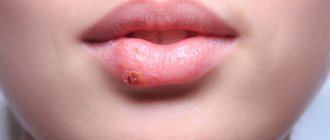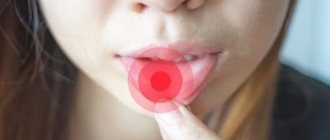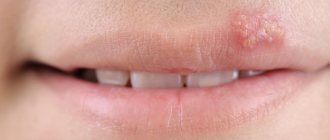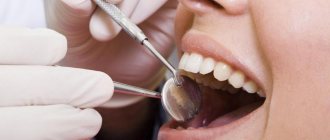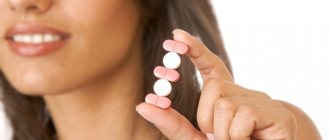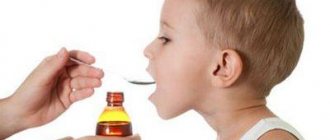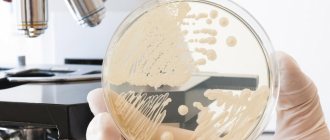All information is provided for informational purposes only and does not constitute medical advice. The system, methods, methods of treatment, necessary medications can only be prescribed by your attending physician.
Herpes spots, as well as the appearance of scars, depressions on the skin and scars require special treatment. These can be traditional methods and the use of ready-made pharmaceutical preparations to speed up the regeneration process.
To prevent the formation of cosmetic defects, herpes should be properly treated throughout the course of the disease.
After suffering both acute and chronic herpes infection, the following may remain on the skin and lips:
- Stains.
- Scars.
- Scars, etc.
Why do spots form after herpes on the lips and skin?
The formation of unaesthetic spots of various shades that differ from the main color of the skin, as well as scars and scar tissue, is usually associated either with illiterate treatment, or with mechanical herbs of rashes or deliberate peeling off of blisters and crusts during the course of the disease.
Attention! It is forbidden to peel or puncture blisters and crusts at any stage of herpes development.
You should not wet the rash with water, use decorative cosmetics (especially of dubious quality) in an acute process for the purpose of masking, or any cosmetic creams not intended for the treatment of herpes.
The ingredients contained in such products can cause significant harm to the appearance of the skin and lips and aggravate the natural process of regeneration of damaged tissues and mucous membranes.
Some consequences of herpes need to be dealt with only after complete recovery (for example, visiting a beauty salon). The task during this period is proper treatment and preventive measures.
Treatment should be carried out only with the help of special means and medications for internal and external use, prescribed by the doctor.
You can properly remove stains and rashes using home methods or using special creams and ointments that speed up the regeneration process.
Pharmacist advice. In order to prevent the formation of any unaesthetic manifestations on the skin after an infection, you should try to eliminate pain, itching and burning during the disease itself.
Therefore, we recommend five rules:
- Use calendula in the form of oil or alcohol lotions, if it is well tolerated.
- Make compresses with herbal decoctions, for example, from celandine herb and chamomile flowers.
- Prepare an infusion of tansy, which has proven antiviral properties. Such infusions are used both for oral administration and for wiping the skin of the face and lips.
- Apply aloe or Kalanchoe juice, which should be used to carefully treat rashes and scabs. If you don’t have time to squeeze out the juice, you can apply a freshly cut leaf to the wounds, after washing it and removing the skin.
- Do cold therapy using ice cubes made from infusions of medicinal herbs and black tea, which have an anti-inflammatory effect.
Such actions, together with general therapy, will help prevent the appearance of spots and scars in the future.
To prevent spots and scars, it is necessary to activate the processes of regeneration of damaged tissues
How does the healing process work?
| Regeneration phase | Duration of each stage | Signs | Actions | Possible consequences |
| Primary tissue tension | From the moment of injury and usually up to 7 days, in case of complications - a longer period | Tight contact of the edges of the lesions with the formation of a scar | Application (externally) of anti-inflammatory and antimicrobial agents with a delicate texture (gels) | Complications in the form of purulent processes due to the addition of a secondary infection |
| Secondary fabric tension | Up to a month or more | Filling of cavities with granulation tissue with the possible formation of a rougher scar | The use of combined fat-based ointments with a denser texture | Formation of rough scars, spots and other defects |
The use of various means (for external use) solves the following problems:
- Prevents possible complications.
- Promotes rapid filling of damage with granulation tissue.
- Accelerates recovery processes in general.
At the same time, the initial period of treatment requires the use of gels that have a delicate texture, as well as traditional methods adapted for this stage. Then, when granular tissue appears, thicker ointments with a heavier texture are used, creating reliable protection.
Each period of the disease and the characteristics of its course in a particular patient require the use of its own remedy.
| Features of the regeneration phase | What's happening | What determines the healing time? | Complications | Treatment |
| The first stage – from two weeks to a month | Migration of fibroblasts, formation of new collagen, reduction of visible inflammation and swelling, if any | From immunity, degree of damage and use of special means | Deterioration of the condition for a number of reasons, including fresh infection with pathogenic microbes from the external environment | The use of drugs with a therapeutic combined effect aimed at eliminating inflammation and preventing re-infection |
| The second stage – from a month to several weeks and even months | Development of the process of replacing damaged tissues with granulation tissue | Mainly from reparative processes | The possibility of developing “frozen wound” syndrome, when the rash takes a long time to heal or the appearance of rough scars and noticeable spots | The use of drugs to accelerate reparative processes |
Features of the tissue regeneration phase
“Grandma’s” methods for combating herpes spots
At home, it is quite possible to use home methods. If the process of destruction after herpes has gone too far, you should consult a cosmetologist in a specialized clinic or a beauty salon with a good reputation.
However, it is prohibited immediately after suffering from the disease to visit salons for a number of procedures that are not directly related to therapeutic measures for herpes.
These include:
- face cleaning;
- decorative makeup to disguise marks of herpes;
- any type of peeling.
Herpes “wakes up” when immunity decreases
Causes of recurrence of herpes on the lips: stress or emotional distress; various other diseases, in particular colds, flu, diabetes, HIV; poisoning or intoxication; drinking alcohol, caffeine and smoking; excessive ultraviolet radiation; hypothermia or overheating; onset of menstruation; overwork and exhaustion; poor nutrition/diet or stomach upset; other factors individual to each person.
After “awakening,” the virus travels back to the skin. As the virus moves through a nerve, it causes inflammation of the nerve tissue.
The development of herpes can be divided into several stages. At the first stage, the person feels unwell. At the site where the “fever” appears, there is pain, tingling, and the skin turns red. At the inflammation stage, a small painful blister filled with fluid forms. After some time, the bubble bursts and a colorless liquid containing billions of viral particles flows out of it. An ulcer appears in its place. At the final stage, the ulcer becomes covered with a crust.
Most often, herpes appears on the lips, but lesions can also appear on the face, in the ears or in the mouth.
TOP - 10 home recipes
White natural clay
Homemade masks must be made according to the instructions on the package. The course of such masks is a month, two to three times a week. The break is about a month and a half, then the course should be repeated.
Clay for masks can be purchased at pharmacies, cosmetic stores or in supermarket departments. Clay helps whiten spots, has an anti-inflammatory and regenerating effect, and exfoliates the stratum corneum of the skin.
Natural honey with cinnamon
A mask made from these ingredients promotes rapid healing of the skin, eliminating its various defects, including spots and scars from herpes. It is used only in the absence of allergic reactions to bee products, as well as cinnamon.
A tablespoon of honey is thoroughly mixed with a teaspoon of fine cinnamon and applied to clean skin for 15 minutes. Wash off with warm water and apply nourishing cream.
Fresh cucumber
For red spots that have not disappeared after suffering from herpes, homemade lotion made from fresh cucumber helps well. Cucumber whitens the skin naturally due to its natural ingredients and practically does not cause allergies.
However, you should be patient; a certain amount of time and regularity of procedures are required to get a good effect. If you don’t have time, you can wipe your clean face with a slice of cucumber every day.
But the best effect comes from homemade lotion, which is prepared like this: grate a medium-sized cucumber on a fine grater, put it in a dark glass bottle with a tight stopper and fill it with vodka (250 ml). Leave for half a month at room temperature.
Strain and use as a rubbing lotion.
Lemon
It has similar properties to cucumber, but since it somewhat dries out the skin, it is good to use lemon juice if you have oily facial skin.
You can gently wipe especially problem areas with dry and normal skin types. After applying lemon juice, the areas should be treated with a rich cream. Freshly prepared juice is used, which must be diluted with warm boiled water in a one to one ratio.
Parsley
Both a decoction of parsley leaves and ice from the infusion are used. Preparation of the decoction: boil 20 grams of herbs and two glasses of water over low heat for no more than three minutes.
Cool completely, strain. Store the decoction in the refrigerator for no more than four days or prepare ice, which is much more convenient and effective. If you decide to make cosmetic ice, the dose of raw materials and water can be doubled. The broth is poured into molds and placed in the freezer.
You can wipe your skin with ice several times a day. In addition to lightening spots, such ice and rubbing with a decoction gives an excellent rejuvenating, anti-inflammatory and lifting effect.
Baking soda
A simple, yet effective result is obtained by making a paste of ordinary baking soda and warm water. The mixture is applied to clean skin until completely dry, then gently washed off with water and a moisturizing or nourishing cream is applied.
St. John's wort herb
An infusion that is prepared at home: two tablespoons of raw materials are steamed in a glass of boiling water. Leave for about an hour. Strain and wipe the problem areas several times a day with a cotton pad soaked generously in the infusion. The result can be seen in about half a month.
Oatmeal and kefir
Homemade oatmeal mask with fresh kefir. Has whitening properties, removes redness and blemishes. A spoonful of oatmeal is diluted with kefir to a semi-liquid pulp and left for an hour and a half until it swells.
Then the mass is mixed and applied to clean skin until completely dry (about half an hour). Wash off with warm water and apply a suitable cream. The mask can be done every other day for a long period of time.
Essential natural oils
Such oils are used both independently and in combination with each other. Tea tree oil, geranium, rosemary, rosewood, and mint have a good effect.
Oils are used in homemade creams or in ready-made day and night face creams (no more than one or two drops at a time). Essential oils can only be used if there is no allergy.
Recipe No. 1. Mix a teaspoon of olive oil, two drops of rosemary oil, a drop each of clove, lavender and peppermint oils. Apply the mixture to problem areas twice a day - morning and evening.
Recipe No. 2. Frankincense – two drops, neroli oil (orange tree, Rutov family) – five drops, lavender oil – six drops. Apply once daily.
Badyaga
A fairly effective remedy, however, in some people it causes allergies or severe redness of the skin. Moderate hyperemia in the absence of an allergic reaction and discomfort after the mask does not serve as a reason to cancel the procedures. Badyaga powder is sold in pharmacy chains.
The powder should be diluted according to the instructions for the drug and applied to clean skin. The mask has a powerful wound-healing, anti-inflammatory and skin cleansing effect. The main condition for successful application is the exact exposure time, which should not be exceeded.
If slight redness appears, we recommend using masks at night or on weekends. A good therapeutic effect of the drug has been proven, but in the presence of significant scar tissue, Badyaga will not be able to cope with the problem and serves only as a good additional method to the main treatment.
Therefore, we recommend masks not for complete elimination, for example, of scars after herpes, but as a means that has a positive effect on the general condition of the skin and to some extent eliminates spots after rashes. If there is damage to the skin prior to wounds, badyagi masks are prohibited.
What causes herpes zoster?
The infection is caused by herpes virus type 3 - varicella zoster; primary infection leads to chickenpox, and after a few years activation and development of herpes zoster is possible. It is known that after chickenpox, the virus hides in the nervous tissue and for some reason manifests itself as an extensive lesion, but within the innervation of one nerve. Naturally, this infection cannot occur in someone who has not had chickenpox.
With age, the frequency of infection increases by an order of magnitude; cancer patients, transplant recipients, and HIV-infected patients are especially susceptible. It is often suffered by healthy people; recurrent illness is very rare. Varicella zoster is activated by stress, hypothermia or a cold, but the exact reasons are unknown to science.
The incubation period is counted from the time of illness with chickenpox; for most, this occurs in early childhood; several decades pass before the appearance of herpes. At this time, varicella lives in the spinal ganglia, becoming activated, moving outward along the nerve - into the skin, where it forms typical rashes.
Scars after herpes. Home method - paraffin
After herpes, not only spots can form, but also scars, which require more radical methods to eliminate them. In some cases, you have to consult a cosmetologist and undergo hardware treatment. However, there are also home treatments that can improve your skin condition.
Paraffin . Pharmacy special paraffin is used for applications; paraffin from candles is not suitable for procedures. The paraffin is slowly dissolved in a water bath until it becomes liquid. Cool to a pleasantly warm temperature (to avoid burns). The mass is applied to the affected areas and left until it hardens.
Then it is removed and used for the next procedure. It has contraindications – dilated blood vessels. Before use, it is recommended to consult a doctor.
Medicines for spots after herpes
All dosage forms for the treatment of scars and spots after herpes that are currently used are divided into two main groups:
- Ointments and creams that stimulate the process of regeneration of tissues damaged by the virus. Such drugs are used both to prevent the appearance of any unaesthetic formations at the site of a healing rash, and to treat already formed defects.
- Pharmacy ready-made products to enhance the processes of healing and tissue restoration, as well as the resorption of existing scars. These drugs are used more often in the presence of long-formed formations as a result of many exacerbations of herpes or after a severe course after the primary infection.
Ointment for external use Viferon
Includes a powerful therapeutic component - tocopherol acetate, as well as ascorbic acid, recombinant interferon (human) and additional indifferent ingredients.
Taken together, the ointment helps eliminate spots and minor scars of any origin, including the consequences of herpes.
Thanks to the following effects:
- immunomodulatory;
- anti-inflammatory;
- regenerating;
- membrane stabilizing.
Interferon cannot completely destroy herpes viruses, but helps prevent their reproduction during all periods of the disease. In addition, interferon stops the reproduction of attached pathogenic microflora.
Ascorbic acid and tocopherol have clinically proven antioxidant properties.
Gel (ointment) Dermatix
A gentle and easily absorbed dosage form is a gel that dries instantly and penetrates deep into damaged tissues due to its texture. The gel is able to maintain optimal water balance in the skin, which is extremely important for herpetic lesions and complications after them.
Dermatix has been proven to have a corrective effect on scars and scar tissue.
The gel has the following effects:
- softening;
- kelloidolytic;
- painkillers;
- antipruritic;
- anti-pigment.
This drug is considered to be the so-called first line of therapy, specifically designed for patients with scar tissue. To date, this gel, which contains silicone, has been approved by the FDA and has received recommendations from international experts.
Dermatix is approved for widespread use for this group of patients. Intended for both the treatment of scars, keloids and hypertrophic scars, and for their prevention.
Salicylic-zinc ointment (Lassara paste)
Contains zinc oxide, which is included in a huge number of different medicinal and cosmetic preparations (sunscreen lotions, day creams, many foundations, products for protecting against ultraviolet radiation, baby powders, etc.)
Basic properties:
- antiseptic (antimicrobial);
- astringent (anti-inflammatory, astringent);
- skin whitening;
- regenerating effect.
The salicylic acid (aspirin) contained in the paste helps stop the inflammatory process and slightly whitens the skin. It is a naturally occurring beta hydroxy acid that was first obtained from willow bark.
Aspirin is a keratolytic, a substance that stimulates the process of cell exfoliation, which is very important in the presence of age spots and scars after herpes. After herpetic eruptions, which leave unsightly marks, such dead cells cannot exfoliate on their own and form significant accumulations.
This leads to blockage of the skin pores, and the inflammatory process is further aggravated.
As a result of regular use of the paste, spots on the skin become less noticeable and scars are reduced. Lassara paste can be successfully used in the treatment of the consequences of herpes, but only after consultation with a doctor.
The ointment is prescribed when it is necessary to dry the skin at the site of damage. The course of treatment is no more than 8-10 days.
Gel and ointment Solcoseryl
Gel and ointment have the following properties:
- accelerates the regeneration of damaged tissues;
- increases reparative processes;
- activates aerobic metabolic reactions;
- accelerates oxidative phosphorylation;
- increases oxygen consumption by tissues;
- accelerates collagen protein synthesis;
- influences the stimulation of cell proliferation in damaged tissues.
The gel has the most delicate texture and does not contain fat, so it is instantly absorbed without leaving a greasy sheen. The ability of the drug to form granulation tissue and eliminate exudate has been clinically proven.
Pharmacist advice. Pharmacies stock Solcoseryl both gel and ointment. In the initial period of treatment (fresh rashes and residual traces of herpes, which are difficult to heal), it is recommended to use a more gentle gel. Fats in dosage forms for external use are not indicated during this period of treatment. From the moment fresh granulations begin to appear and existing undried wounds and lesions become drier, you should switch to ointment. In this case, the fatty component is necessary for the skin, as it forms a thin protective film and protects the skin from adverse environmental conditions. It should be understood that herpes spots and scars can only appear as a result of illiterate treatment of the rash at all stages of the disease.
Actovegin ointment
The ointment has no contraindications, is well tolerated and practically does not cause allergies.
Properties:
- acceleration of metabolism at the cellular level;
- activation of intracellular utilization;
- acceleration of the transport function, due to which tissues are saturated with oxygen and glucose;
- increased metabolism of adenosine triphosphoric acids;
- increasing the total cellular energy resource.
Result:
- accelerated skin regeneration;
- rapid healing of damaged tissues;
- elimination of scar tissue;
- restoration of the natural shade of damaged skin.
The ointment is allowed to be used during pregnancy and breastfeeding. The course of treatment is about a month. Treat damaged areas twice a day.
Ointment (cream) D-Panthenol
The product accelerates regeneration and improves carbohydrate, protein and fat metabolism. Includes pantothenic acid, which supports the normal function of epithelial cells. In the case of skin lesions, including the consequences of herpes, there is a deficiency of pantothenic acid in the body.
Properties:
- activation of the regeneration process;
- normalization of cellular metabolism;
- increasing the strength of collagen fibers;
- slight anti-inflammatory effect;
- nourishing and softening the skin.
The ointment can be used by pregnant and lactating women, and is approved for children starting from infancy.
What to do if you have a “cold” on your lips
At the moment, no drugs or treatment methods have been developed that would completely destroy the herpes simplex virus in the human body. But we can give some advice to those suffering from herpes.
- Strictly follow the rules of personal hygiene! Since herpes is contagious, it is necessary to wash your hands with soap and use separate utensils and towels.
- Don't put your hands near your eyes! And do not wet your lenses with saliva! Herpes can affect the mucous membrane of the eye.
- It is not recommended to touch the viral rash or kiss. The virus can be transmitted by wearing one lipstick or smoking one cigarette.
- If you try to remove a blister or scab over a sore, the virus can spread to other parts of the body.
- Avoid oral sex! The virus from the affected lips can cause genital herpes in a partner.
- A young mother must also take certain precautions to protect her baby from contracting herpes. If you have herpetic rashes, you must wash your hands with soap and water every time before touching your child. And under no circumstances should the affected surface come into contact with the child’s skin.
